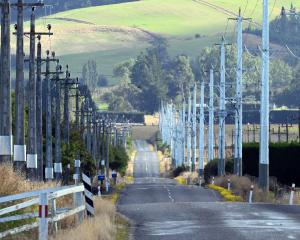
We attended a [Guardians of Lake Dunstan] meeting in Cromwell on April 6. We were interested to hear the views of recently elected Otago regional councillor Michael Laws and to correct a few misconceptions that had arisen regarding lagarosiphon.
The meeting was poorly chaired and, as well as Mr Law's views on lagarosiphon, appeared to be a thinly disguised vehicle for his views on regional governance for Otago (unitary authority status), which, if implemented would be inimical to the wider Otago environment.
We expected a modicum of corporate loyalty towards the organisation Mr Laws had so recently been elected to. Such proved not to be the case. We witnessed an unwarranted attack on the integrity and performance of the Otago Regional Council (ORC).
Now, it is true that our organisations and other Otago conservation bodies have, at times, had our differences with the ORC. But the ORC's performance has developed and improved and the environment is benefiting as a result through the setting of rural water quality standards for Otago waterways and minimum and residual flows on rivers. It would be a retrograde step if Cr Laws' unitary authority crusade was to get in the way of that priority work.
Mr Laws labelled my views on the fishery and wildlife benefits of lagarosiphon, at the head of the lake, as ``absurd'' (also stupid and ridiculous, if I recall correctly).
If my views are ``absurd'', I'm in good company - these views coincide with those of Mary de Winton and John Clayton, New Zealand's foremost aquatic weed researchers, who have written the 10-year Lake Dunstan lagarosiphon control plan, which all parties interested in its management have recently signed up to, including the Lake Dunstan Guardians.
Andrew Burton, the chairman of the Guardians, and chairman of the meeting, signed on their behalf. One would have thought that, having signed up to the control plan that he agreed with its aims, objectives and implementation, rather than now trying to undermine it.
The Clutha Fisheries Trust and the Otago Fish and Game Council both signed up to the control plan, as well. We agree with its aims, objectives and implementation. These concentrate on controlling the lake weed at high value sites (HVAs), such as boat ramps, swimming and water-skiing areas, while leaving the wildlife area at the head of the lake alone, because of the recognised fishery and wildlife benefits there.
The plan also recognises it would be impossible to eradicate the weed in Lake Dunstan because of its presence upstream, in Lake Wanaka and the Clutha and Kawarau Rivers. This must have been the part of the plan Mr Laws neglected to read.
Inland fisheries agencies in Ireland have had similar experiences to New Zealand with lagarosiphon control and these were referenced by Mr Laws in his discussion on potential eradication of the lake weed, by the use of new methods, including the use of jute matting.
This matting completely suppresses the weed and allows some native species to grow through it, something that may have potential usefulness in New Zealand and, particularly, in HVAs in Lake Dunstan, if any future testing shows it to be suitable for our local conditions.
However, the eradication potential Mr Laws mentioned referred to bays and other selected parts of the lake it was trialled in, not the whole lake.
Any discussion of potential eradication of lagarosiphon in Lake Dunstan, which is still an evolving ecosystem, having only been filled in 1993, must, of course, recognise that even if this did prove to be possible, it would only remain so for a short period of time.
This is because the source of the weed in both Lake Wanaka and the Clutha and Kawarau River channel edges and backwaters would remain, which would be impossible to eradicate. Also the high-value fishery and wildlife area at the head of the lake would be destroyed in the process - would the community really want that? We doubt it.
We think the current 10-year control plan for Lake Dunstan is appropriate and sufficient and should proceed as planned.
-Murray Neilson is a Clutha Fisheries trustee and Otago Fish and Game councillor; Dan Rae is an OFGC councillor.











